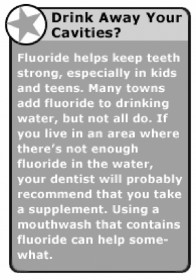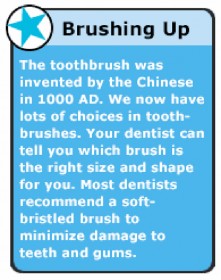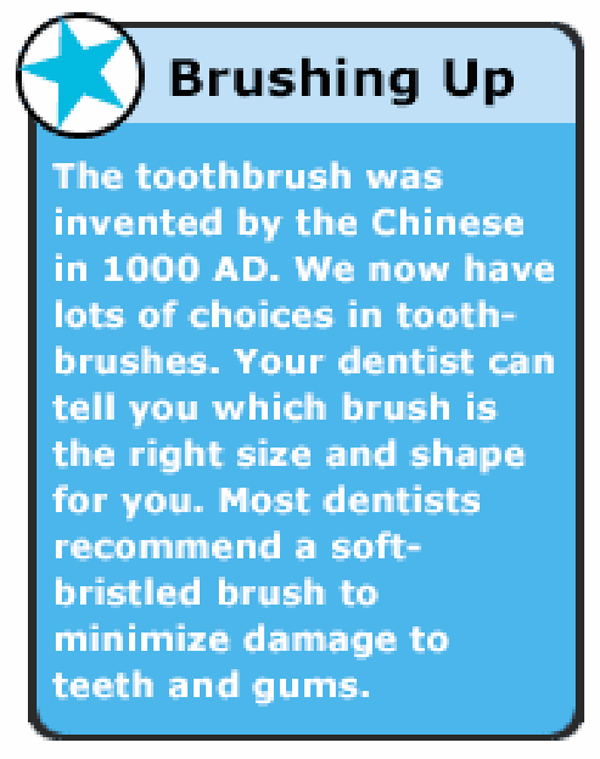Health
By Dr Kiran Koora, MDS
Dentists say that the most important part of tooth care begins at home. Brushing and flossing properly, along with regular dental checkups, can help prevent tooth decay and gum disease.
If you’re like most people, you don’t exactly look forward to facing a dentist’s drill, so wouldn’t it be better to prevent cavities before they begin?
Giving plaque the brush-off
 To prevent cavities, you need to remove plaque, the transparent layer of bacteria that coats the teeth. The best way to do this is by brushing your teeth twice a day and flossing at least once a day. Brushing also stimulates the gums, which helps to keep them healthy and prevent gum disease. Brushing and flossing are the most important things that you can do to keep your teeth and gums healthy.
To prevent cavities, you need to remove plaque, the transparent layer of bacteria that coats the teeth. The best way to do this is by brushing your teeth twice a day and flossing at least once a day. Brushing also stimulates the gums, which helps to keep them healthy and prevent gum disease. Brushing and flossing are the most important things that you can do to keep your teeth and gums healthy.
Toothpastes contain abrasives, detergents, and foaming agents. Fluoride is the most common active ingredient in toothpaste, that prevents cavities. So you should always be sure your toothpaste contains fluoride.
About one person in ten has a tendency to accumulate tartar quickly. Tartar is plaque in a hardened form that is more damaging and difficult to remove. Using anti-tartar toothpastes and mouthwashes, as well as spending extra time brushing the teeth near the salivary glands (the inside of the lower front teeth and the outside of the upper back teeth) may slow the development of new tartar.
If you have teeth that are sensitive to heat, cold, and pressure, you may want to try a special toothpaste for sensitive teeth. But you will still need to talk to your dentist about your sensitivity because it may indicate a more serious problem, such as a cavity or nerve inflammation (irritation).
Tips on proper brushing
 Dentists say that the minimum time you should spend brushing your teeth is 2 minutes twice a day. Here are some tips on how to brush properly:
Dentists say that the minimum time you should spend brushing your teeth is 2 minutes twice a day. Here are some tips on how to brush properly:
Hold your brush at a 45-degree angle against your gumline. Gently brush from where the tooth and gum meet to the chewing surface in short (about half-a-tooth-wide) strokes. Brushing too hard can cause receding gums, tooth sensitivity, and, over time, loose teeth.
* Use the same method to brush all outer and inner surfaces of your teeth.
* To clean the chewing surfaces of your teeth, use short sweeping strokes, tipping the bristles into the pits and crevices.
* To clean the inside surfaces of your top and bottom front teeth and gums, hold the brush almost vertical. With a back and forth motion, bring the front part of the brush over the teeth and gums.
* Using a forward-sweeping motion, gently brush your tongue and the roof of your mouth to remove the decay-causing bacteria that exist in these places.
* Use an egg timer or play a favourite song while brushing your teeth to get used to brushing for a full 2 to 3 minutes. Some electronic toothbrushes have timers that let you know when 2 minutes are up.
Facts on flossing
Brushing is important but it won’t remove the plaque and particles of food between your teeth, under the gumline, or under braces. You’ll need to floss these spaces at least once a day.
The type of floss you choose depends on how much space you have between your teeth. Dentists usually recommend unwaxed floss because it’s thinner and easier to slide through small spaces. However, studies have shown that there is no major difference in the effectiveness based on the type of floss used. With any floss, you should be careful to avoid injuring your gums. Follow these instructions:
* Carefully insert the floss between two teeth, using a back and forth motion. Gently bring the floss to the gumline, but don’t force it under the gums. Curve the floss around the edge of your tooth in the shape of the letter ‘C’ and slide it up and down the side of each tooth.
* Repeat this process between all your teeth, and remember to floss the back sides of your back teeth.
Tooth-whitening products
Some toothpastes claim to whiten teeth. There’s nothing wrong with using whitening toothpastes as long as they also contain fluoride and ingredients that fight plaque and tartar. But these toothpastes alone don’t contain much in the way of whitening ingredients and probably won’t noticeably change the colour of your teeth. It’s easy to be lured by ads telling people they need gleaming white teeth. But these ads are really targeted to older people. The truth is that most teens don’t need tooth whitening because teeth usually yellow as a person gets older.
If you think your teeth aren’t white enough, though, talk to your dentist before you try any over-the-counter whitening products. Your dentist may be able to offer you professional treatment, which will be suited to your unique needs and will work better than over-the-counter products.
Be careful when buying over-the-counter whitening products for other reasons too. Some bleaching agents may damage your gums and mouth. So always follow the instructions on any whitening product you use.
We will continue our tips in the second part of this article next week.





